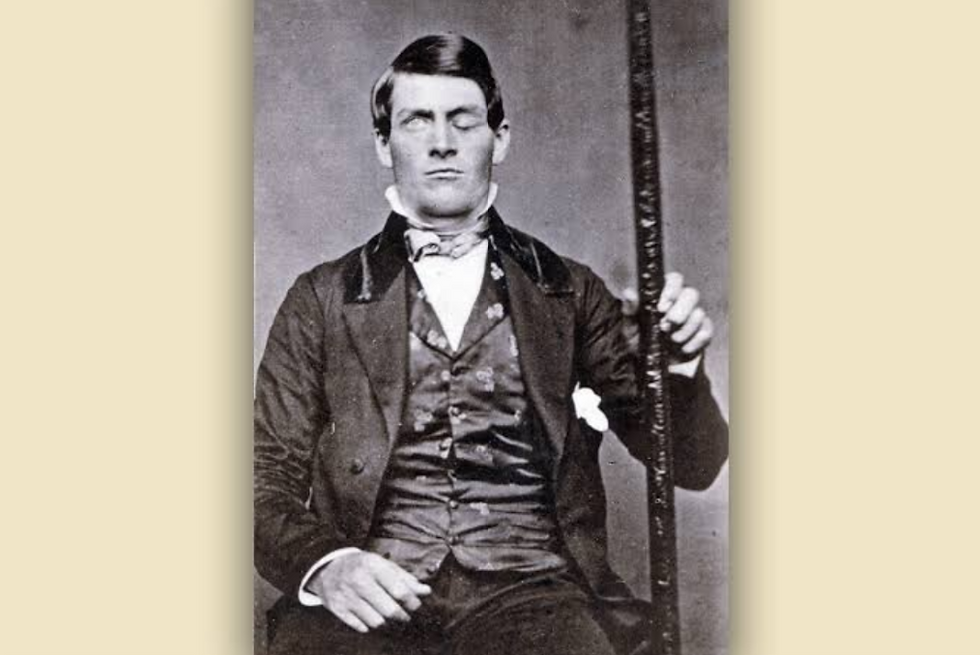Phineas Gage: The Incredible Case that Revolutionized Neuroscience
- STEM Today
- Nov 20, 2023
- 2 min read
November 2023
Katrin C
In the history of neuroscience, the name Phineas Gage stands out as a remarkable and intriguing case that has captivated scientists and the general public alike. The story of Phineas Gage is not just a historical incident; it is a pivotal event that significantly contributed to our understanding of the brain and its functions.
In September 1848, the town of Cavendish, Vermont, witnessed an event that would redefine our comprehension of the connection between the mind and the brain. Phineas P. Gage, a 25-year-old railroad foreman, experienced a life-altering incident during a routine rock excavation. While preparing for a blast, an untimely explosion propelled a 1.1 m-long, 6 mm in diameter, 6 kg tamping iron through his left cheek and out of the top of his skull.

What makes the case of Phineas Gage truly incredible is not just the survival of such a traumatic injury but the subsequent changes in his personality and behavior. Gage, who was described as a responsible and amiable man before the accident, underwent a profound transformation. Colleagues and acquaintances noted that he became impulsive, irritable, and exhibited a lack of restraint. This sudden shift in behavior provided a unique window into the connection between brain function and personality. The rod had damaged Gage's frontal lobes, specifically the prefrontal cortex – a region now recognized for its crucial role in personality, decision-making, and social behavior. At the time of Gage's injury, the understanding of the brain's functions was rudimentary, and the concept that specific brain areas were responsible for distinct aspects of behavior was not well-established. Gage's case, however, played a pivotal role in changing that perspective.
Researchers and physicians began to recognize the significance of the frontal lobes in regulating social and emotional behavior. Phineas Gage became a living example of the intricate relationship between brain anatomy and personality traits. His case laid the groundwork for future studies on brain injuries and their effects on cognition, emotion, and social interactions. Moreover, Phineas Gage's story ignited interest in the broader field of neuroscience, prompting inquiries into the localization of brain functions and the ways in which different brain regions contribute to our complex behaviors. The case became a cornerstone in discussions about the brain's plasticity – its ability to adapt and reorganize after injury.
Throughout history, Gage's case has been revisited by successive generations of neuroscientists. From Stanley Cobb's skull diagrams in the 1940s to modern CT scans and MRI technology, researchers continually seek to understand how the tamping iron altered Gage's brain wiring. Medical and psychology students still learn his story, and practitioners reference Gage when evaluating patients with similar brain injuries.

Remarkably, Gage's personality change lasted only two to three years. Despite enduring massive brain damage, he found employment as a stagecoach driver, showcasing the human capacity for rehabilitation even in the face of severe injury. Gage's life, though cut short by an epileptic seizure linked to his brain injury, leaves an enduring legacy in neuroscience. His skull and the infamous tamping iron are preserved at the Warren Anatomical Museum in Boston, serving as a reminder of a pivotal moment in our understanding of the mind-brain connection.
References:
https://www.npr.org/sections/health-shots/2017/05/21/528966102/why-brain-scientists-are-still-obsessed-with-the-curious-case-of-phineas-gage
https://www.ncbi.nlm.nih.gov/pmc/articles/PMC1114479/
.png)



Literally never heard ab this before !! Insane !!